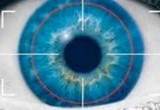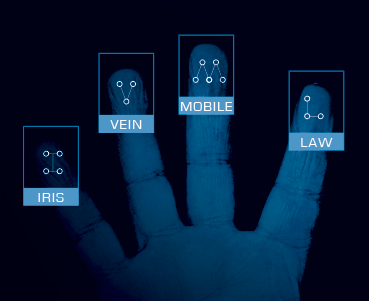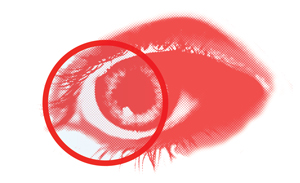‘Golden Age’ for iris recognition?
Technology advancements set stage for a massive surge in the highly accurate biometric modality
18 April, 2017
category: Biometrics
The underlying technology is also getting less expensive. From processors to cameras, the hardware needed to capture and process an iris biometric is embedded in most smartphones.
“If you go back five or 10 years, iris technology required dedicated hardware that was quite expensive because it was custom made,” says Francis Mather, chief of computer vision and liveness detection at New York-based Hoyos Labs.
With the miniaturization and mainstream adoption of underlying components, insiders predict iris identification platforms may soon be priced competitively with high-end fingerprint scanners.
No more iris dance
New higher end cameras have made the current generation of iris technology easier to use than early generations. A common joke among iris critics was that in order to capture a good image, subjects had to move back a little, then forward a little, then duck a little.
“You had to be very close and do the chicken dance to get a good scan,” Pritikin says.
The current technology is now “on the move.” It is on tablets and door locks and other devices that don’t require a stationary, perfectly posed subject. In fact, modern iris systems have become so flexible that some say false rejects are more often the result of an uneducated or uncooperative subject than a technical failure.
That isn’t to say that iris technology is foolproof. Mather points out that many iris solutions rely on infrared light to capture the subtle contours of the iris. When a sensor is outdoors and there is an abundance of infrared light from the sun, interference can become a problem.
Another sun-related problem comes in the form of a human behavior – squinting. As people squeeze their eyes in the face of bright sunlight, enough of their iris can be obscured to cause false rejections.
Where next for iris biometrics?
So far, high-end and high-price applications have dominated the iris biometrics market. But that could also change. “We are going to see multiple classes of products – enterprise applications and also consumer applications – as the price continues coming down,” Pritikin says.
Princeton Identity’s Clifton sees major potential for iris technology in health care identification. Iris scans may mean that the days of scammers presenting fraudulent credentials in order to receive care under someone else’s name may soon be gone, he explains.
U.S. government agencies have been reluctant to adopt iris because it was new and didn’t fit into procurement formulas, But once nist published its latest guidance – IREX V – they have been quicker to consider the technology
Any application that requires a secure identity is now a good candidate. Iris ID is working on college campuses to install iris scanners in dining halls to identify patrons and expedite lines.
Meyerhoff says one school bought a license they thought would fit the population. They were conservative because the program was new and voluntary, and students didn’t have to opt in. “After the first week, they needed a bigger license because it was much more popular than expected,” Meyerhoff says.
Agencies within the U.S. government have been reluctant to adopt iris because it was new and didn’t fit into procurement formulas, Meyerhoff says. But once the National Institute for Standards and Technology published its latest guidance – IREX V – procurement officers have been quicker to consider iris technology, Meyerhoff says.
Consumer acceptance
For a biometric modality to become mainstream, it all comes down to consumer acceptance. For decades, even fingerprints struggled to overcome the stigma of perceived criminality.
Iris has its own hill to climb. “You get mixed opinions,” Clifton says. “Some people say ‘It’s just a picture of your eyes – no big deal.’ But others say it is creepy.”
As iris scanners make it onto more and more devices and people see how simple and reliable they are to utilize, he believes adoption will quickly follow.
Much of the stigma is the mere fact that it is new. “We still get people who think there is a laser in the scanner or you have to put your face on top of the camera,” Meyerhoff says. “There are still a lot of misconceptions.”
As iris recognition is incorporated into mobile devices, these misconceptions are likely to fade, says Mather. A similar thing happened when fingerprint scanners showed up on the iPhone. “Familiarity will drive people’s acceptance,” he says.
Manufacturers are already designing iris scanners into their handsets and platforms. The next phase will be things like consumer door locks, and even locks for things like laptops, or even conceivably, refrigerators, suggests Clifton.
As the technology gets less expensive, the potential is going to grow. “Adoption will take some time, but there is a great future for iris biometrics,” Clifton says.




